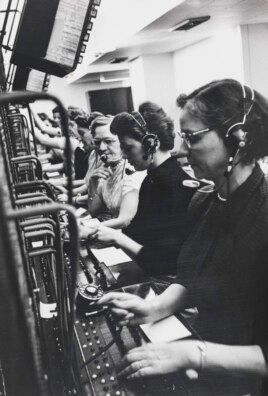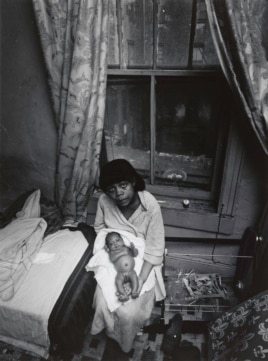
Images in Washington Exhibit Reflect a Transforming America
A new exhibit at The Phillips Collection in Washington, titled «American Moments,» is a collection of more than 130 photographs taken during the 1930s to the ’60s by some of the most prominent photographers in the country.
Curator Renée Maurer said the images help to tell the story of a transforming America.
“While putting the show together we realized that there was a story that could be told, that reflected time, place and experience in America,» she said.
The photos include portraits of regular Americans at work and at play, the building of bridges and skyscrapers by hardworking laborers, and a series of timeless images of some of the country’s most beautiful landscapes.
«The themes reveal different ideas, different moments of change that have occurred in America,» said Maurer. «Whether it be Berenice Abbott on a road trip trying to capture a rural America, or Lee Friedlander taking a photograph of a World War II monument, these are things that are very familiar to our history.”
Growth of Cities
Photographers like Clarence John Laughlin, Margaret Bourke-White, Lewis Hine and Paul Strand documented the rapid growth in many of America’s cities, including the building of new roads, bridges and buildings.
Berenice Abbott was known for her documentation of bold, black-and-white photographs of New York City’s architecture in the 1930s. As the city was rapidly replacing hundreds of 19th-century buildings with new Art Deco skyscrapers, Abbott shot many of them from unique angles, emphasizing their towering forms.
Louis Faurer’s street scenes highlighted the energy of New York City’s nightlife and the people reveling in its magic.
Photojournalist Esther Bubley was best known for her intimate portrayals of ordinary people. But she was just as comfortable capturing a tender moment between mother and child as she was creating a series of candid portraits of women in the workplace during the 1950s.
“I think it was the type of photographer that Esther Bubley was,» said Maurer. «She was always interested in the human condition and how she could capture that in a photograph.”
During World War II, there were restrictions on gas, tires and rubber, so Bubley traveled across the country for the Office of War Information to document how Americans were getting around.
Maurer said that although Bubley didn’t drive, she went on many bus trips across the country to capture an America on the move.
«She created stories, made friendships, and took wonderful photographs of men and children, older couples, people waiting for the bus, people on the bus, people sleeping on the bus, people getting frustrated by the bus,” she said.
Life in the Shadows
In the postwar years, while much of the country was going through a period of explosive innovation and modernization, there was also turmoil. Blighted neighborhoods were still a harsh reality in many of America’s cities, and much of the segregated South was slow to embrace an increasingly forceful civil rights movement.
Renowned photographer Bruce Davidson was inspired to use his camera to raise awareness and promote change. In 1961, he began photographing the civil rights struggle and related topics.
He explained: “I drove through the segregated South, entering a run-down migrant camp in South Carolina, observed schoolchildren picking cotton under the noonday sun in rural Alabama.
«I wanted to experience, uncover and expose the underpinnings of segregation and the climate of poverty across the country. I needed to see for myself what was being endured and what was no longer going to be tolerated.”
He captured powerful portraits of disadvantaged Americans with a series of images he took in an impoverished neighborhood in New York.
They include a gaunt-looking woman with a newborn on her lap, and children on a fire escape above a trash-filled yard.
Davidson wrote about his New York street series: “What was important at the time was to show the politicians, the bankers and the mayor what was going on in terms of housing.
There’s enough dignity, humor, life in the body of work when you look at it. There were those who thought I made the place look too bad. Other writers said I didn’t make it look bad enough.”
Davidson also immersed himself in the world of the traveling circus, where he captured the loneliness of the performers:
“I first saw the dwarf standing outside the circus tent in the midst of a cold spring afternoon. He was half my height and I felt a certain power over him. He stood before my camera sad and silent, taking the last drag of a cigarette.
His name was Jimmy Armstrong and he was billed as ‘Little Man’ on the circus fliers. We got to know one another and after the last show went to a diner together. Sometimes people would smirk at us, but Jimmy always stayed calm and self-contained.”
Maurer said Davidson «wanted to really show America what was still going on in the ’60’s, and really ask America, ‘Is this something that we can still tolerate?’
“It was important for him to show his audience that even though change is beginning, there’s still a lot of work left to do.»
Maurer hopes these photographs will inspire a greater understanding of an America that was undergoing major change.




